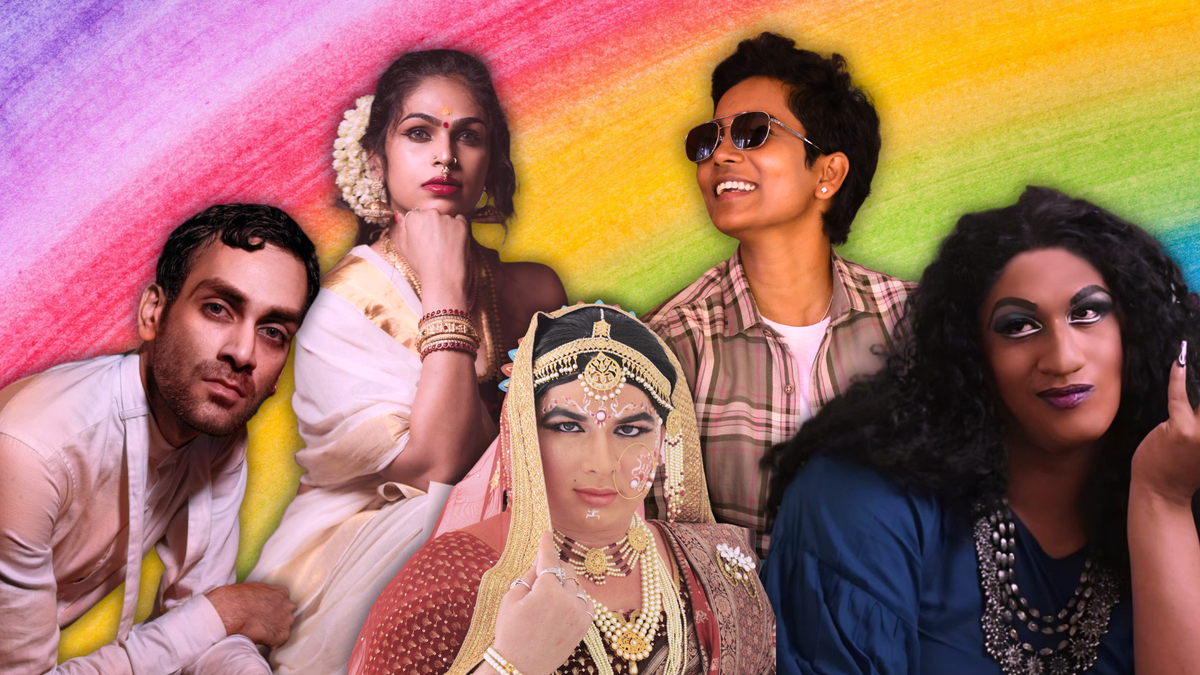For long, the plea from the LGBTQIA+ community to storytellers has been this: “Let us tell our stories since our lives are largely different from how cis-gender heterosexuals perceive us.” Over the years, queer narratives in Indian cinema have seen significant steps forward; yet, what is considered queer cinema remains limited, focusing only on a few queer identities, whereas the gender and sexuality spectrum has infinite shades of colour and innumerable complexities.
Even popular stories from queer filmmakers have only taken a crack at either gender or sexuality, but hardly the intersection between gender and sexuality, or the many different queer identities. The state is such that Delhi-based queer actor Vidur Sethi — who starred in Onir’s Pine Cone, which made a splash at the Kashish Pride Film Festival last year — believes that we are far from even reaching the term ‘queer cinema,’ though several encouraging attempts might end up creating a space.
Films like Ek Ladki Ko Dekha Toh Aisa Laga and Kaathal: The Core have been affirmative and in line with what the community is about, says Bangalore-based drag artist, Alex Mathew a.k.a Maya The Drag Queen, while agreeing that a lot needs to be done to break existing stereotypes and to normalise queerness.
Pointing out how the limited scale of good indie films from queer filmmakers restricts the themes from reaching larger audiences, Hyderabad-based drag queen and expressionist dancer Patruni Sastry adds that we need a voice like Ryan Murphy in India to take queer cinema beyond the festival circles.
Chennai-based actor-filmmaker and activist Malini Jeevarathinam, who had a commendable turn as a queer cop in Inspector Rishiearlier this year, believes that good queer stories are more of a necessity now. “Over the last six to seven months, queerphobia on social media has been at a peak. Someone recently posted a video saying they will never accept queer identities except transgenders. Good stories can educate and sensitise people to queerness,” they say.
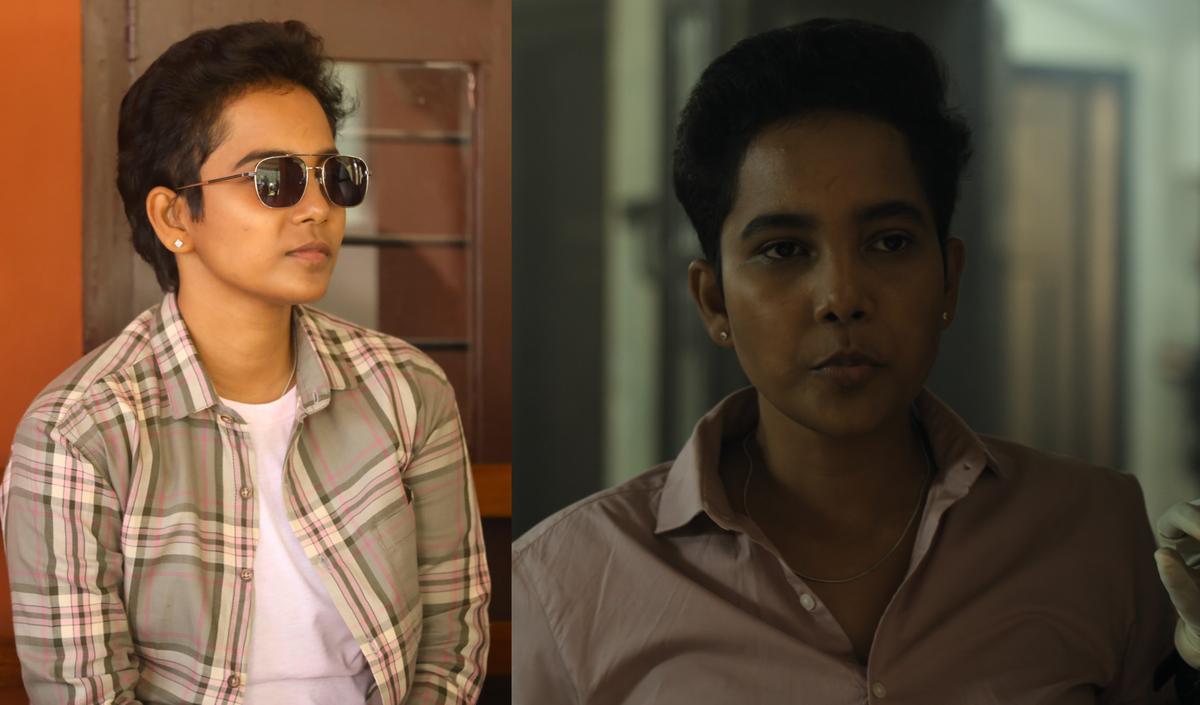
Malini Jeevarathinam; in a still from ‘Inspector Rishi’
| Photo Credit:
Special Arrangement
Along with Negha Shahin, a Chennai-based actor known for her performance in Antharam, the aforementioned artists tell us what they wish for the future of queer cinema.
ALSO READ: The truth about India’s LGBTQ+ voices on screen
Nuanced topics can be explored:
The art of drag
From stories that show the vibrant and empowering art form of drag to nuanced takes on the gender transition process that transpersons undergo, the possibilities of what can make for some compelling stories are diverse. Alex wants to see a good film made on drag queens that does justice to the idea behind the art form. Patruni points out that although there have been films that captured the concept of drag — like Rajendra Prasad-starrer Madam and the Marathi biopic Balagandharva — they aren’t explicitly called queer cinema for one reason or the other.
Patruni Sastry’s queer cinema recommendations
John Waters’ films with drag queen Divine, especially Pink Flamingos (1972)
Geeli Pucchi, Neeraj Ghaywan’s segment in Ajeeb Daastaans (2021)
Paris Is Burning (1990), an American documentary by Jennie Livingston
Madam (1994) by Singeetam Srinivasa Rao
Chitrangada (2012) by Rituparno Ghosh
Arekti Premer Golpo (2010) by Kaushik Ganguly

A good film on drag could break a pivotal stereotype that perils drag queens, which Alex says is being passed on even within the community. “Some assert that drag queens need to undergo gender transitioning, which is not the case; I am completing a decade as a drag queen this year and I have never wanted to be a transwoman,” he says. This is similar to a misconception that according to Negha has misled even some members of the community. “There’s no awareness of gender dysphoria even within the community; some say that a transperson has to undergo transition or surgery, and there’s a lot of hatred against non-binary people,” she says.
For years, cinema has built a misconception on how feminine men are supposed to be and how their femininity has to be expressed; from the gross ‘Avana nee’ dialogues and insinuations in Tamil cinema to mocking effeminate men for comedy in Telugu cinema, misrepresentations have continued till Ramabanam and Mark Antony, both of which came out last year. Speaking out against this, Alex imagines a film in which a man can go to the gym but also express femininity: “Because such people exist in our reality.”
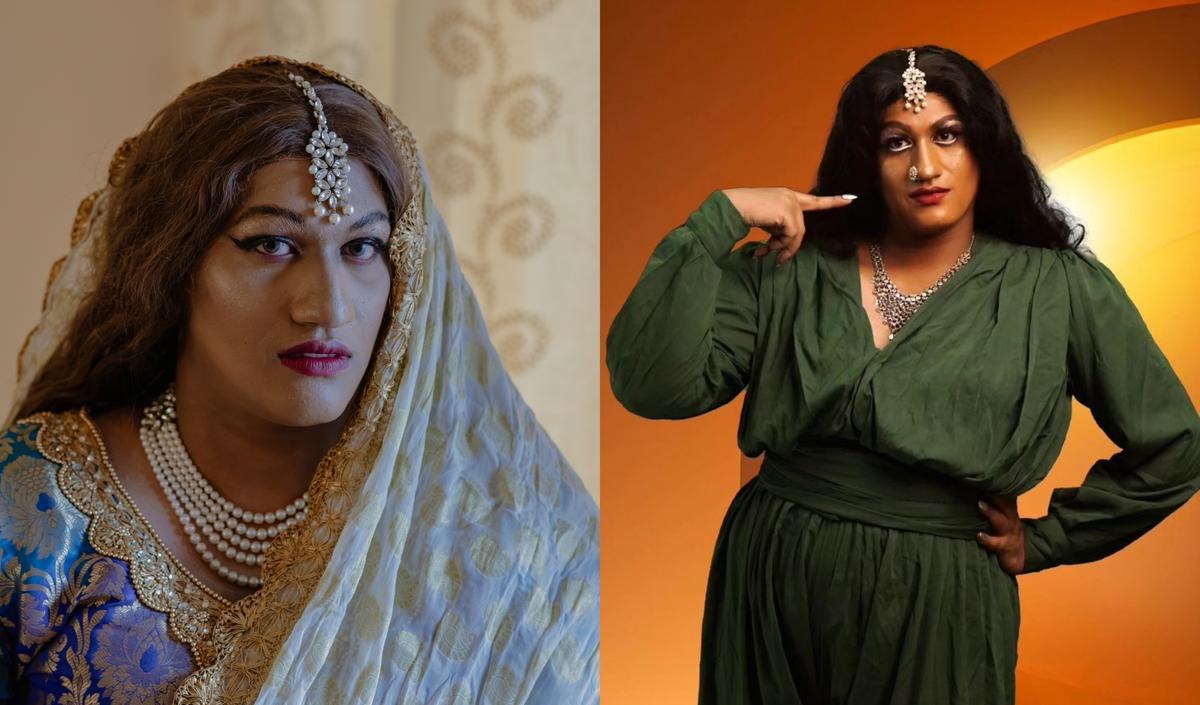
Alex Mathew a.k.a Maya The Drag Queen
| Photo Credit:
Special Arrangement
Unexplored sexualities, and queer relationships
Both Alex and Patruni express an eagerness to know more about the lives of asexual and bisexual people, respectively. Malini resonates with them when they say that sexuality doesn’t get spotlighted as much as gender. “We have a film that features a transwoman as the main lead, and a film like Thittam Irandu about a transman, but hardly many films are made about sexuality with main-lead queer characters.” Malini, who dreams of making a rural-based period queer rom-com, believes there are political issues due to which production houses are reluctant to green-light such projects.
Malini Jeevarathinam’s queer cinema recommendations
“I have stopped suggesting movies because most of them might traumatise the viewers, but for now I’d suggest My Dad is Pretty (2017), by Park soo-min, and Pride (2014), by Matthew Warchus.”

Negha agrees that there haven’t been enough on-screen on the lives of transmen. “There haven’t been stories about transgender couples; say, a relationship between a transman and a transwoman, or a transwoman’s lesbian relationship with a cis woman and so on,” she says while mentioning Love Is Love, a Tamil short story collection she wrote along with her transman partner Rizwan that explores the many perspectives from which queer love can be viewed.
To write such nuanced stories, filmmakers primarily need to understand the difference between gender and sexuality. This year’s Om Bheem Bush — a film Patruni mentions for its inaccurate representation — seemed quite confused between a transperson and a gay man. “And people should also understand that queer identities do not surround just our sexuality,” adds Alex. “We are all the same; it just so happens that our partners and journeys are different and that’s what sets us apart,” he says.
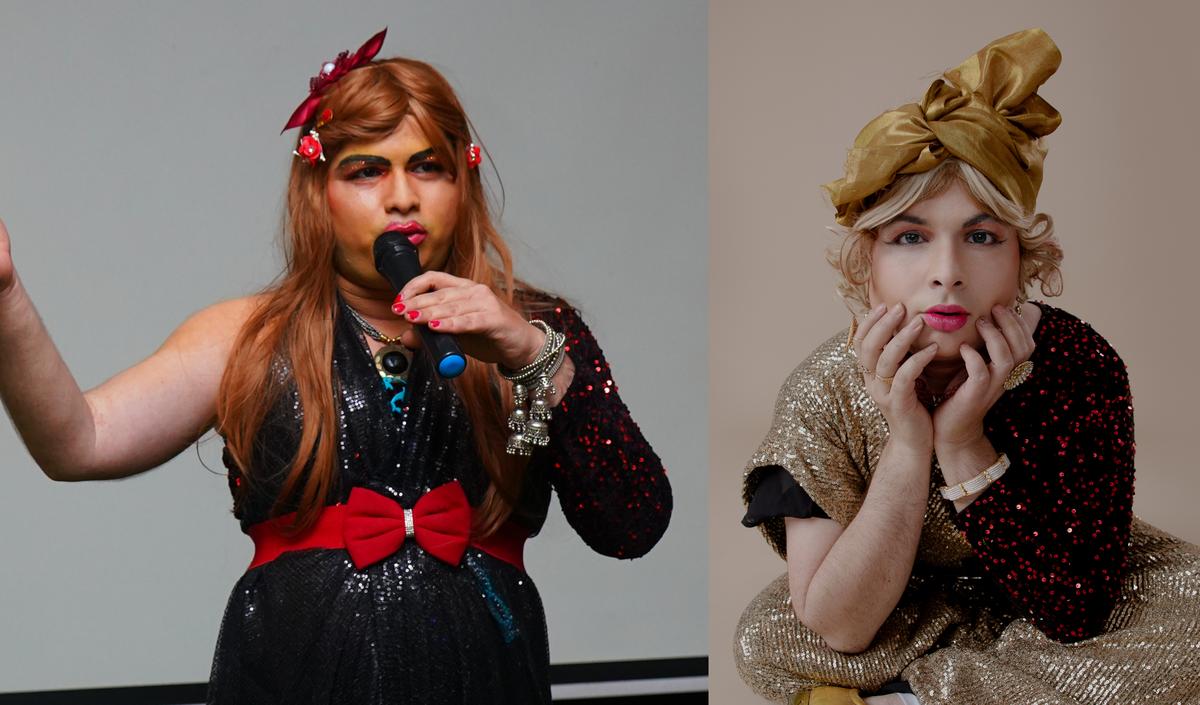
Patruni Sastry
| Photo Credit:
Special Arrangement
Vidur too wishes to see more nuanced takes on queer relationships. “Because you aren’t supported by your biological families, what are the struggles of queer couples concerning finances, finding a new house, pursuing dreams and so on?” They ponder how stories could explore the impact of queerness on various aspects of a person’s life. “And where are the nuanced stories about HIV or about transpersons experiencing their everyday lives?” asks Vidur.
The intersectionality between caste and queer identity is also something that interests Patruni and Vidur. “Because those are realities and their lives are very different from what we see on screen. It shouldn’t always be about two people who are living in Bombay,” says Patruni. Vidur wonders why since Margarita with a Straw, we haven’t seen stories on differently abled queer people.
Alex Mathew’s queer cinema recommendations
To Wong Foo, Thanks for Everything! Julie Newmar (1995) by Beeban Kidron
The Adventures of Priscilla, Queen of the Desert (1994) by Stephan Elliott

Stories on the mental health of queers
Being a trained mental health professional, Negha says that stories can be told on the mental fabric of being queer in a cis-het society. “There’s so much that goes through the mind of a queer person. People ask so many intrusive or inappropriate questions. Even something as menial as going to the shop to buy groceries or getting a delivery from a delivery agent becomes a task because of the harmful lens we are looked through. All this definitely depresses us, and so queer people need extensive therapy.”
Unfortunately, as Negha says, therapy is expensive when people are fighting for survival, and society only adds to all the weight that queers are forced to carry in their hearts. “When films show a queer person as the villain, they don’t understand what they would have gone through in their past. Cis-hets don’t realise that in reality there are so many transgenders who would have gone through all that but still have the wisdom to be themselves and to heal themselves.”

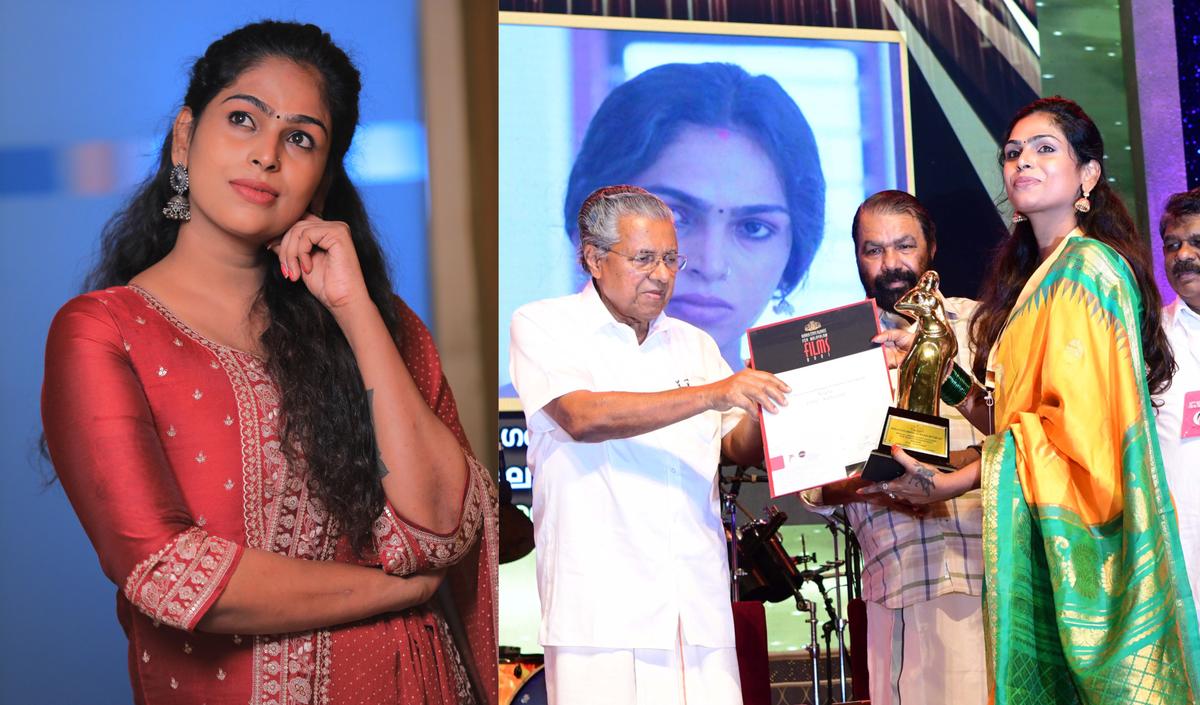
Negha Shahin; while receiving the Special Award in Any Category for Women/Transgender for her performance in ‘Antharam’ at the 52nd Kerala State Film Awards in 2022
| Photo Credit:
Special Arrangement
Making matters worse is how, as Negha adds, when representation gets skewed on screen it adds to a toxic notion prevalent in society. “Quite often cis-hets say ‘Hey, this transwoman harassed me for money’ or ‘This gay man touched me inappropriately’. Abuse is abuse and everybody needs to stand up against it but what does that have to do with queer rights and queer representation? They say we can’t blame all men for the crimes of few, and if that’s the case, the same can be told for queers as well,” questions Negha.
Negha Shahin’s queer cinema suggestions
Pose (2018-2021) by Ryan Murphy, Brad Falchuk, and Steven Canals
Disclosure (2020) by Sam Feder
No more pity party stories; queer cinema is not ‘issue’ cinema:
All the artistes unanimously agree that cinema should go beyond the notion that queer stories are glum tellings on the sufferings of being queer in a heteronormative society. They resonate with what filmmaker Onir had earlier told us about queer cinema often being reduced to ‘issue’ cinema. The ideal scenario is a balance between stories that can educate audiences and some good slice-of-life. “Stories should show us happily going about our day-to-day lives. But cinema often portrays as if we are always crying and our tear ducts have dried up; we are much more than that,” says Alex, citing how the character played by Trinetra Haldar Gummaraju in Made In Heaven Season 2 refused to be reduced to this stereotype, while also educating people about what’s happening to the trans community on an everyday basis.

Malini says that films should now start focussing on finding solutions to issues. But firstly, are filmmakers in general looking at queer cinema as just issue cinema? Vidur points out how issues surround queers but that the storytelling approach changes from director to director. “I have been fortunate enough to have been a part of a film like Pine Cone, which is essentially about love and heartbreak; about interpersonal relationships and a gay boy’s dream to become a filmmaker.”
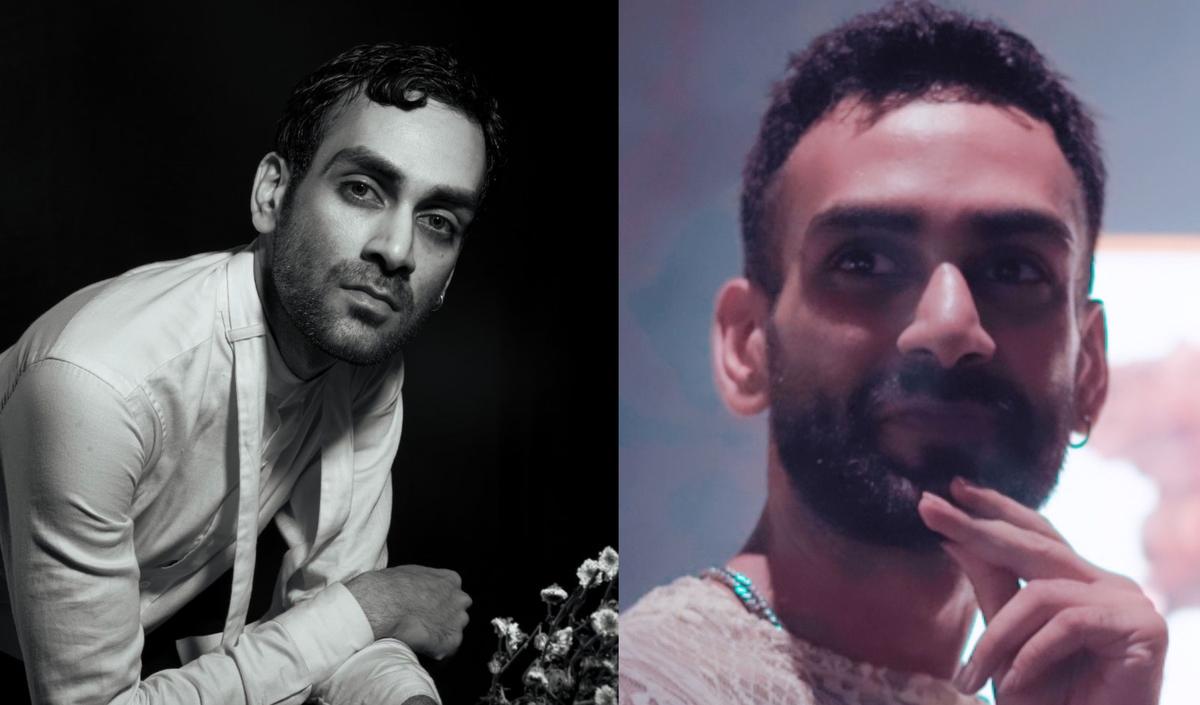
Vidur Sethi
| Photo Credit:
Special Arrangement
As it is apparent from these discussions, an obvious solution to alleviating misconceptions is to include queer folk and their lived experiences in storytelling. It helps to normalise queerness and break misconceptions when more queer characters are written, say Malini and Negha. “It need not be the lead character; any character can talk about queer sensitivity or ally-ship,” says Malini.
Negha questions a flaw in how filmmakers represent society in general as a homogenous mixture of cis-hets. “If you show a house, that family can have a gay child or a gender non-conforming teen or someone who is undergoing transition. If you can’t show it in the family, then someone in that street or neighbourhood can be queer; if not, then perhaps a colleague in the office they work at. That’s how society is in reality… but on films, it’s always just cis-hets.”
Vidur Sethi’s queer cinema recommendations
In a Year of 13 Moons (1978), by Rainer Werner Fassbinder
Blue Period (2021-), an anime series available on Netflix
Aligarh (2015), by Hansal Mehta
The future that these queer artists see for their stories to reflect on the silver screen might seem grim when compared with the realities of what gets to be made in cinema in India. This is how Vidur puts it into perspective, “One cannot deny the reality that for 24 years of my life, I was a criminal in this country, and so, of course, it’ll take a long time for us to reach a space where we can get into nuances.” But as they end their statements, there is also hope that we will eventually get there.

